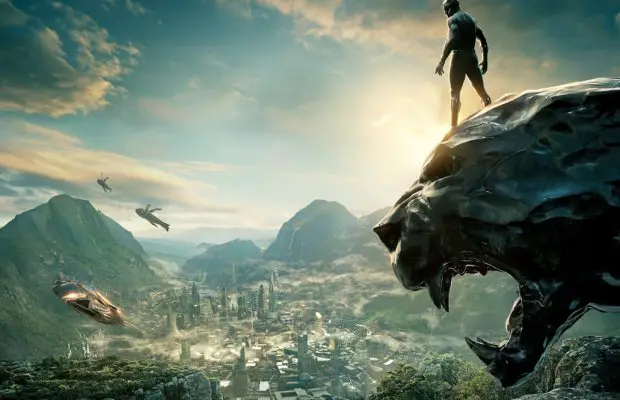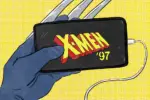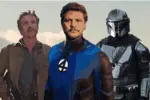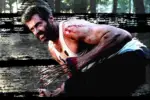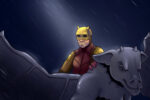Calling “Black Panther” the most significant Marvel movie yet is an understatement. Calling it the most significant movie of the year may not be a stretch either.
In the words of Time magazine writer Jamil Smith, “Hollywood has never produced a blockbuster this splendidly black,” and as such the movie has become a cultural phenomenon, smashing box office records and shattering preconceived expectations about the success of a movie led by and centered around women and people of color.
Part of the reason for its success is the sheer fact of its existence, with contemporary society having finally reached a point where this type of movie can be made. More importantly, “Black Panther” is simply an excellent movie.
The actions flows, the story telling hits home and the entire cast turns in a stellar performance. It may arguably be the best standalone Marvel movie yet, a sentiment endorsed by the president of Marvel Studios, Kevin Feige.
Of course, as a movie set in the Marvel Cinematic Universe (MCU), “Black Panther” works as more than a standalone movie. The ways in which it interacts with the context of the MCU, as well as with its real-world background, makes it a near-perfect example of how a film inhabiting a cinematic universe should work, and how the presence of a broader universe can enrich the world it’s set in.
1. Characters
Most of the film focuses on Wakanda, a location which makes its first appearance in the MCU. The majority of Wakanda’s elements, including its politics, military and technology, require introduction in “Black Panther.” The film manages to accomplish this without heavy-handed exposition, by showing the audience the world through the eyes of King T’Challa, the Black Panther.
The use of T’Challa as an entry point into Wakandan culture is helped by a previous Marvel film, “Captain America: Civil War.” The film never showed T’Challa in the context of his homeland, but it let audiences get to know him, making him a point of familiarity in the otherwise unfamiliar setting of “Black Panther.”
Several of the other characters in Black Panther also made appearances in earlier Marvel films, including arms dealer Ulysses Klaue and CIA agent Everett Ross, whose roles in the plot are fairly limited.
While they could have been introduced in “Black Panther” without much difficulty, including them as minor characters in earlier movies gives them a sense of personal history, making their later appearances feel meaningful without requiring extensive backstory character development.
2. Setting
While “Black Panther” revolves around Wakanda, a good deal of the action takes place in the outside world. A mission midway through the film takes place in South Korea, dealing with the underground market for advanced tech.
Characters such as Erik Killmonger, the movie’s main villain and an ex-operative with the United States military, and CIA agent Everett Ross show how the U.S. government’s world intertwines with Wakanda’s.
The diverse settings links not only to the wider world outside Wakanda, but also to the wider world of the MCU. The underground market in South Korea connects to similar markets in “Spiderman: Homecoming” and “Agents of S.H.I.E.L.D.,” creating the impression of a vast global network of dealers.
The influence of American intelligence and military organizations has also factored into the “Iron Man” movies, “Captain America: Civil War” and “The Punisher.”
Despite these wider links, however, the references never become so complicated that the audience needs to catch every single one in order to understand what is going on in the movie. Instead, they add depth by alluding to offscreen history and culture that devoted Marvel fans can easily recognize, while still being transparent to viewers who are coming into the fictional universe for the first time.
3. Tone
Marvel movies are decently varied in their composition. A movie like “Thor: Ragnarok” deals with different themes, and has a separate tone from other Marvel films such as “Captain America: Winter Soldier,” “Iron Man” or “Spiderman: Homecoming.” Common to all Marvel films, however, is their ability to walk a fine line between humor and drama.
Touching moments are set off by puns, action scenes slip seamlessly into comedy and moments of high drama are taken just seriously enough to move the audience while still leaving room for a lighter touch.
“Black Panther” pulls this off effortlessly. The dramatic moments, like Killmonger’s destabilization of Wakanda, are meaningful while character interactions like the delightful pairing of T’Challa and his sister Shuri provide plenty of authentic humor. All together, it feels different from the Marvel movies which have come before it, but similar enough to be a part of the same universe.
4. Real-World Themes
As one of the most significant black movies ever made in Hollywood, the release of “Black Panther” would be tied to a whole host of real-world issues, whether it acknowledged them or not. To its credit, it not only acknowledges its real-world historical and cultural context, but integrates that context into every aspect of the movie.
Some of this integration is accomplished through plot or design details. The fashion and visual design of Wakanda takes inspiration from African culture, and Oakland, the setting of several important scenes in the movie, was the birthplace of the Black Panther Party. This culture is additionally woven into the themes and narratives of the movie.
The story is very much about the black experience, with themes including African versus African-American identity, African heritage and black excellence. The focus of African culture and identity in the movie helps tie it to the issues of contemporary society, enriching the fictional world through its connections to the real world.
5. Purpose
At the end of the day, “Black Panther” doesn’t exist for its own sake. As expertly crafted as it is, with all the connections between it and the rest of the MCU and the real world, the world of “Black Panther” serves as the backdrop, not the main attraction. The focus is on the characters and the message the story is trying to tell, not on the world through which it is told.
The excellence of the story and its characters not only makes the movie as good as it is, but also a key example of how a fictional universe should be used: to support an overall artistic vision.
The richness of the Marvel Cinematic Universe and the willingness of “Black Panther” to deal with contemporary social issues helps drive the story’s narrative being told, while not taking emphasis away from the character interactions and meaningful themes which lie at the heart of good storytelling.


